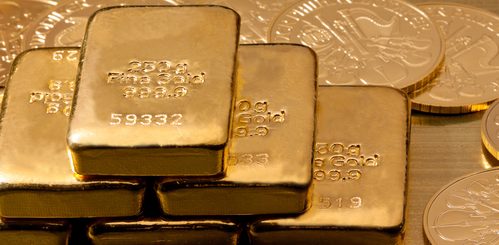How To Tell The Difference Between Real and Fake Gold

Gold is one of the world’s most prized commodities, and while many wear it as a form of jewelry, others use it as a hedge against inflation or economic uncertainty. Regardless, it is important to know the difference between real and fake gold. While this is easy to accomplish by visiting a gold expert, there are a number of tests you can perform in situations where a gold expert is not available. Below are some of them.
Test It With Nitric Acid
This method is best applied to scrap gold. You do not want to use it on jewelry as it could ruin its aesthetic appearance and resale value. To use the nitric acid test, you will first want to make a small scratch in the gold using something like a nail file. If possible, make the scratch in an area that is not that noticeable. Then, take a dropper and place a single drop of nitric acid inside the scratch. Watch to see if there is a reaction. If there is none, this means you’re dealing with authentic gold, but if you do see a reaction, this means you’re probably dealing with a different metal or something that is merely gold plated.
Magnetization And Weight Test
With this test, you’d take the gold and then place it inside a jug filled with water. Since real gold is heavy, it should sink, but if it floats instead, it means you’re dealing with a fake. Another, more sophisticated test is one which uses magnetization. With this test you’d take the gold and position it in close proximity to a magnet. If the “gold” attaches itself to the magnet, this means it is another metal and is thus a fake. Genuine gold in sufficient quantities will never attach itself to a magnet.
See If You Can Locate The Hallmark (On Gold Jewelry)
Most authentic gold, whether jewelry or bars, will have a hallmark which displays the weight, usually in karats. For necklaces or bracelets, it should be visible on the clasp, while for rings it should be seen inside the interior band. Gold jewelry manufactured in the United States in particular will always have the purity showcased in karats with the letter K. Jewelry manufactured in Europe, on the other hand, is denoted with the content of gold shown in the form of a decimal, such as .90, which means ninety percent gold. This test isn’t full proof however, as older gold jewelry may be genuine but may simply not show the gold content since it was made by hand, so use the other tests.
Foundation Liquid Test
To use this test, place powder and liquid foundation on your forehead, and then rub the gold across the same area. Go and look into a mirror. If you see a streak which is black in color, this means that the gold is genuine. Another variant of this test is to rub the gold on the forehead of someone who is low in iron. If so, the blood’s hemoglobin will life up and produce a black colored mark on the skin.


